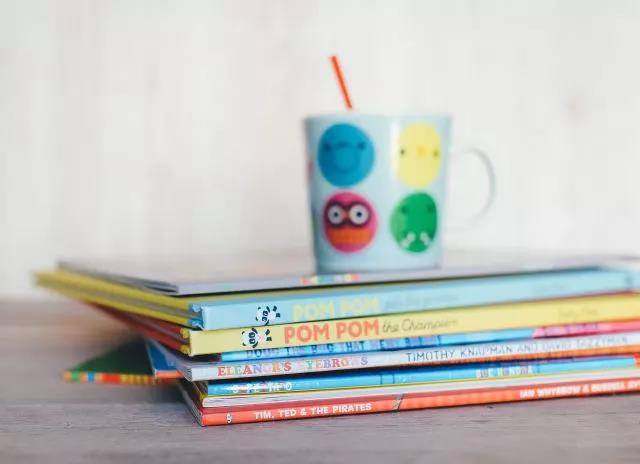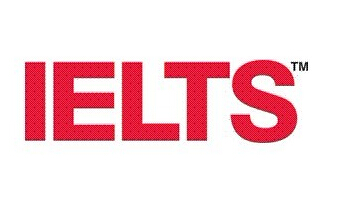做托福听力笔记有什么用
2013-08-19 18:08 供稿单位: 新航道
出国英语考试有哪些 雅思6.5是什么水平 雅思阅读评分标准 托福阅读评分标准 雅思和托福的区别
今天新航道托福频道小编为大家整理了做托福听力笔记有什么用,供大家参考,以下是详细内容:
一、新托福听力的六大特点
1. 听力材料长度增加,每类文章的长度都在600字以上
2. 总题目数量减少,老托福听力题目为50道,新托福为34道3
3. 听力题型简化为两大类:长对话(2个),课堂讲座(4个)
4. 出现三种新的考试题目类型:表格题、重复题、多选题
5. 听完之后才可以看题目
6. 考生可以做笔记
IBT听力考试主要考查的是考生理解文章主旨,从结构上把握全篇、并把握重要细节的能力。
听力考试中主要有6种题型:
§ Identifying topic and main idea主旨题;
§ Listening for details细节题;
§ Determining attitude and purpose态度题;
§ Making inference and predictions推断题;
§ Categorizing information分类题;
§ Summarizing a process过程总结题;
其中主旨题考察考生对全文总体内容的把握;态度题和推断题基本均为复听题,考察考生对于说话人语气以及态度的理解;
用得上记笔记的主要是细节题、分类题、过程总结题。根据笔者对于新托福试题的分析,新托福听力当中的细节题很少考察细枝末节的内容,主要考察与主旨相关的细节信息。因此考生在听录音时的重点应是听清主旨、把握结构、辨别演讲人的态度、确定讲话目的和动机等。
我们推荐的做题顺序是:
1、主旨一般在录音的最开始部分就会出现。因此对于录音开始段的把握很重要;
2、要听清文章的组织信息的结构;是按照分类举例,还是解释一个过程,或者是将事物进行对比分析;
3、根据对于文章结构的了解来决定记笔记的重点;
§ 如果文章结构为分类举例,那么要记录的重点信息为分类的依据、每个类别的名称以及每个类别中列举的例子;
§ 如果文章在解释一个过程,那么要着重去听一些表示阶段的信号词,并记录每个阶段的事件进展以及主要特征;
§ 如果文章在跟事物进行比较或对比,那么要记录他们的相同点、不同点;
4、结合对于全文大意的理解以及所做的笔记进行答题。
二、IBT听力做笔记技巧
1. 确定记录内核心话题
IBT听力正式开始之前会有一个简短的内容介绍,之后屏幕上会出现一些和听力内容相关的,这些可以帮助我们确定下面所要听部分的核心话题。例如, listen to a conversation between a professor and student in a biology class.从这个介绍我们可以知道下面对话内容的场景:biology class,结下来会出现一个图片,里面文字为:Friends of the Earth, Biology class.后面还会出现一个对话内容的图片。通过这些文字和图片,我们可以推断这个对话的主题为与人类地球有关的一个结构,这样机构主要会负责环保事宜。确定主题可以让考生悬着的心慢慢落地。后面的长对话给出的文字和图片提示与对话类似。
2. 记录细节
确定核心话题之后,我们需要做的就是记录与其相关的细节,主要的细节为what , when, where , who , why和 how等。注意记录对话和演讲中信息引导词和信息引导句后面的信息,例如, First ..., let’s look at the ..., Now, Let’s move on to ..., in the nest part of lecture, I‘d like to talk about....
3. 具体的记录方法
1)主要记录实词:名词,动词,形容词。这次词语所包含的信息量大,也是重读和重复的核心词汇。
2)采用简写、符号和缩写的速记法方法记录,例如:Q.=question,ltd.=limited, +=and/plus , ?=question ,/=or。此外,还可以用一些其它只有自己熟悉的速记符号来记录重要信息。
当然,对这些原则的熟练把握离不开勤学苦练以及词汇量的基础。考生要想在新托福的听力考试中取得理想的成绩,需要具备较强的听力理解能力和扎实的英语知识基础。IBT听力分数的提高需要广大考生持续的努力和不断总结!学会做笔记, IBT听力满分不是梦,大家可以参加小马过河的听力备考训练营来进行每天的听力备考。
实例:
下面,我以具体的例子来进行说明。注意,其中的符号是本人的个人习惯,各位考生可以根据自己的习惯创造适合于自己使用的符号,完全没有必要拘泥于本文中所用符号。
OG p157 Practice Set 1. Track01
上方为听力内容,下方为笔记,我把两者对比起来写,以便清楚地显示出听到什么内容改记下什么,怎么记。
Narrator: listen to a conversation between a student and a professor.
学生和教授之间的对话,因而在纸面的左右两侧分别写上P(代表professor) 和S(student),之后,教授说的话写左边,学生说的话写右边。
Student: Uh, excuse me, Professor Thompson. I know your office hours are tomorrow, but I was wondering if you had a few minutes free to discuss something.
S: discuss sth.
Professor: sure, john. What did you want to talk about?
Student: well, I have some quick questions about how to write up the research project I did this semester- about climate variations.
S: how 2 writ research—天气变化(单词拼写不熟悉,所以可以用中文写)
Professor: Oh, yes. You were looking at variations in climate in the Grant City area, right? How far along have you gotten?
虽然是教授说的,但是描述的是学生的项目,因此直接接着前面上文的climate variations(天气变化)写—— in grant city
Student: I’ve got all my data, so I’m starting to summarize it now, preparing graphs and stuff. But I’m just…I’m looking it and I’m afraid that’s it’s not enough, but I’m not sure what else to put in the report. S: got all data, now summarize, not enough, what else put in
Professor: I hear the same thing from every student. You know, you have to remember now that you’re the expert on what you’ve done. So, think about what you’d need to include if you were going to explain your research to someone with general or casual knowledge about the subject, like… like your parents. That’s usually my rule of thumb: would my parents understand this?
P: remember u r expert ,What 2 include 2 explain 2 sb. general/ casual kwldge,—parents. Rule: understand? (用箭头把parents指过来,没有必要再写一遍)
Student: Ok, I get it.
Professor: I hope you can recognize by my saying that how much you do know about the subject.
P: recgnz how much u know
Student: Right. I understand. I was wondering if I should also include the notes from the research journal you suggested I keep?
S: ? include notes journal
(向左的箭头表示from); ? 表示是一个问句或者不确定的事。
Professor: Yes, definitely. You should use them to indicate what your evolution in thought was through time. So, just set up, you know, what was the purpose of what you were doing-to try to understand the climate variability of this area – and what you did, and what you approach was.
P: Yes. Use to indicate__ thought . set up purpose of ur doing, wt did, wt way
(用__表示没有听清楚的单词; 多次出现what, 为加快速度,用wt简写,approach拼写复杂,用同义词way代替)
Student: Hmm…something just came into my mind and went out the other side.
Professor: That happens to me a lot, so I’ve come up with a pretty good memory management tool. I carry a little pad with me all the time and jot down questions or ideas that I don’t want to forget. For example, I went to the doctor with my daughter and her baby son last week and we knew we wouldn’t remember everything we wanted to ask the doctor, so we actually made a list of five things we wanted answers to. P: carry a pad, jt down Q eg: see doctor, list Q. (用字母发音jt来记忆可能不认识的单词jot;用Q表示question, 托福听力中的举例子一般是为说明其他事物服务的,所以只要知道这个例子的作用就可以,而没有必要清楚细节,所以这里只要知道例子是see doctor, list Q.就可以了。
Student: A notepad is a good idea. Sine I’m so busy now at the end of the semester, I’m going pretty forgetful these days. OK. I just remembered what I was trying to say before.
S: good idea. Remembered
Professor: Good. I was hoping you’d come up with it.
Student: Yes. It ends up that I have data on more than just the immediate Grant City area, so I also included some regional data in the report. With everything else it should be a pretty good indicator of the climate in this part of the state.
S: + include regional data (also, as well, and 可以用+表示)
Professor: Sounds good. I’d be happy to look over a draft version before you hand in the final copy, if you wish.
P: look over draft before final copy
Student: Great. I’ll plan to get you a draft of the paper by next Friday. Thanks very much. well, see ya.
S: give P by nxt Fri.
这样一来,几乎所有的要点都已经落实到书面。做题目时,结合笔记和头脑中的记忆,全部做对不是什么难事。
以上就是新航道托福频道为大家整理的做托福听力笔记有什么用,希望对大家有帮助,更多资讯、资料请访问新航道托福频道 https://www.xhd.cn/toefl/
- 上一篇:重点关注托福听力中的信号词
- 下一篇:托福听力如何练习反应速度

- 新航道,英语成功之道。时间获取新航道英语学习资料和新鲜资讯,请在微信公众账号中搜索「新航道英语」或者「xhdenglish」,或用手机扫描左方二维码,即可获得新航道每日精华内容推送和英语学习经验分享,并参与新航道举办的各项活动。
精彩专题
更多视频荟萃
更多
-
120托福节之李老师:你的托福阅读领路人!
时长:01-18

-
120托福节之冉维:你的托福写作领路人!
时长:01-18
托福预测
更多
-
2017年托福听力考情分析及2018年备考建议
2017 年全年的48 场新托福考试已经落下帷...
- 2017年托福口语考情分析及2018年备考建议
- 2017年托福阅读考情分析及2018年备考建议
- 2017年托福写作考情分析及2018年备考建议(下)
- 2017年托福写作考情分析及2018年备考建议(上)









